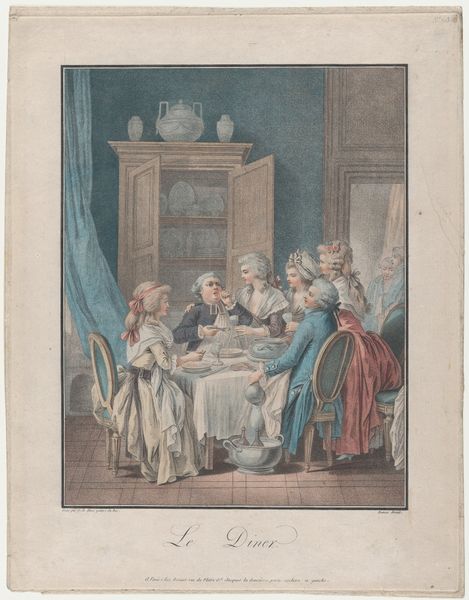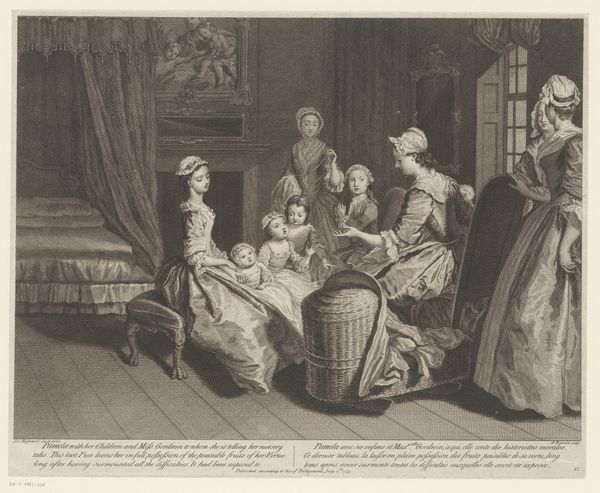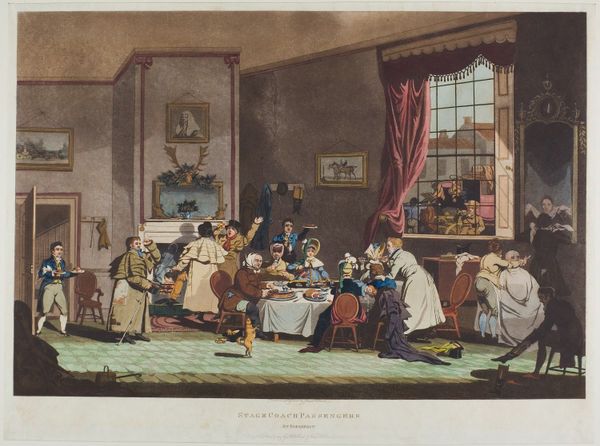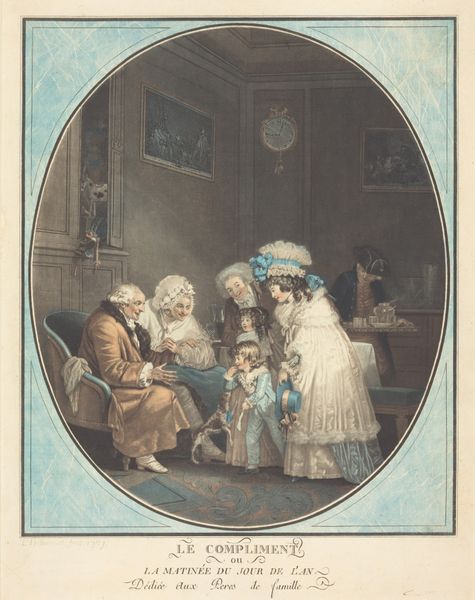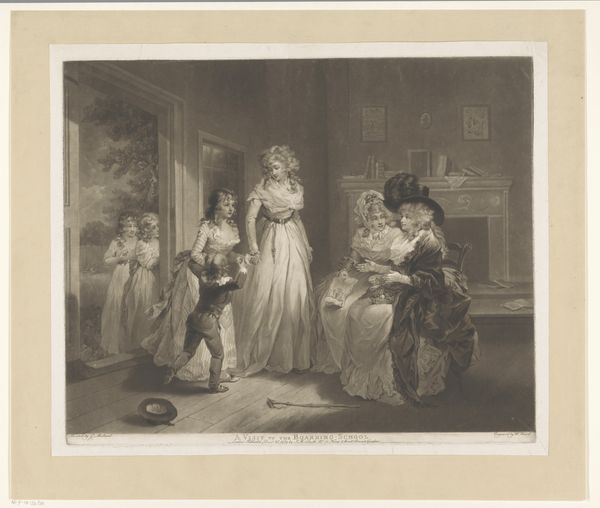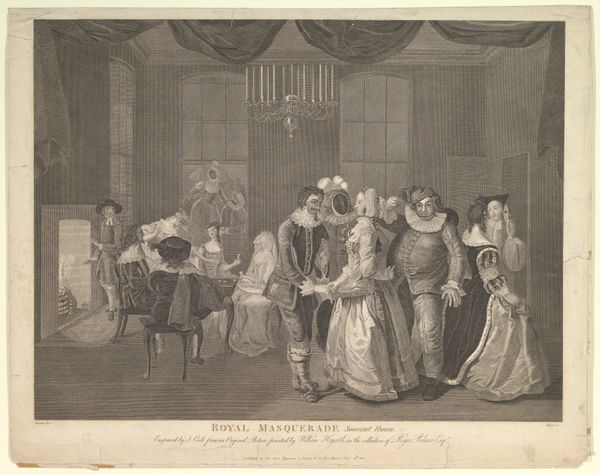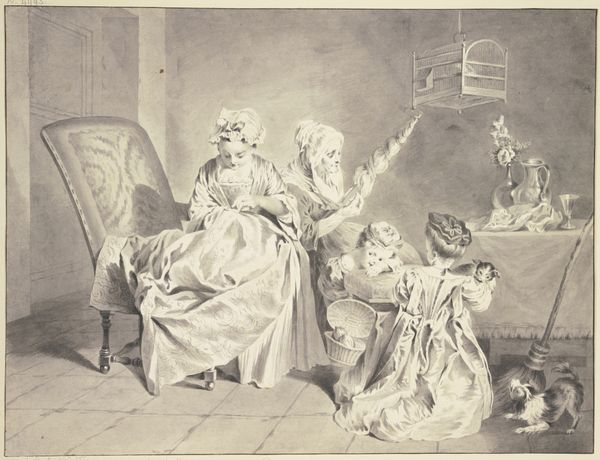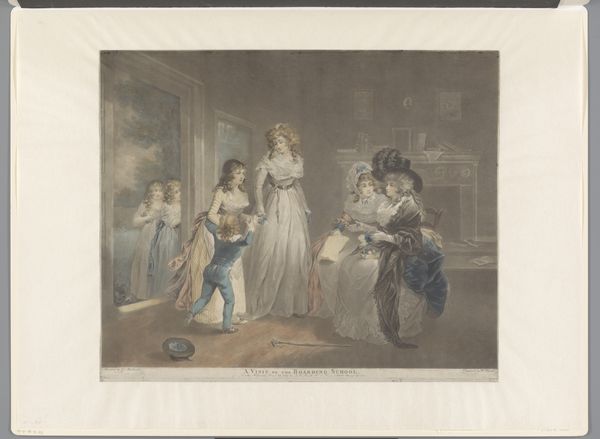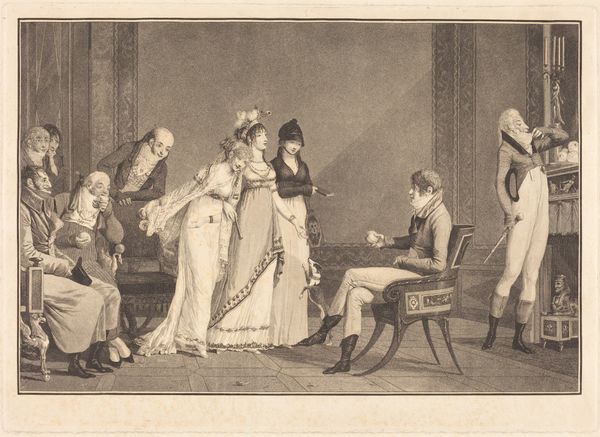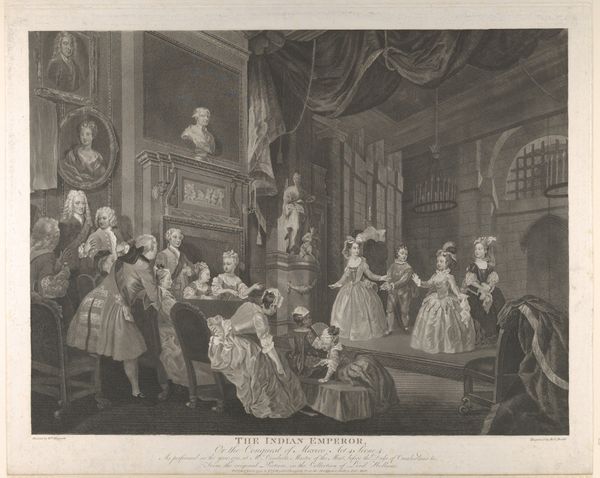
painting
#
portrait
#
figurative
#
painting
#
figuration
#
historical fashion
#
traditional dress
#
romanticism
#
19th century
#
genre-painting
#
history-painting
#
academic-art
Copyright: Public Domain: Artvee
Curator: This is "The Clean Face Rewarded" created around 1801 by James Ward. What are your initial thoughts? Editor: It has a muted elegance. There's such attention to the interior space, all the textiles and finishes, you know? It makes me wonder about Ward's process—how much collaboration there was with fabric dyers, furniture makers to achieve this effect. Curator: It really places emphasis on the social meaning inherent in the presentation of the children. To have a 'clean face' was about more than hygiene; it signified social and moral cleanliness, readiness for societal integration. The mother seated receives the little girl who followed these rules, reinforcing this social idea of proper upbringing, so crucial for the historical context. Editor: Interesting. I fixated on how it looks like it may have been mechanically printed. I mean, what can you tell me about printmaking culture at that time? Who would have bought this image and what meaning did reproducibility give to a family scene of 'cleanliness is next to godliness' being depicted and circulated? Was it meant for consumption? Curator: Well, consider the Regency Era social norms embedded in this seemingly innocent domestic scene, The figures, their clothing, all symbolize ideals of social order, piety and good manners...it's about societal aspirations materialized on canvas through moral messages, family order as ideal, like virtue in an intimate sphere to the social body itself. It’s almost didactic. Editor: I am seeing then how the artist could achieve something different through reproducible material that, say, an academic portrait could not do in kind by reaching further and circulating social scripts more pervasively into middle-class spheres. Thanks to advancements of commercial print in 19th century Britain, the same type of interior and clothing details could become far more broadly and commonly known. Curator: Exactly. So looking deeper it serves to cement established ideals that the virtuous child will inherit and sustain. The child here is positioned on the round table as an "exemplary one", rewarded... but more broadly as well, there is the symbolic gesture toward ensuring continuity in societal expectations, an almost indoctrinal social contract here depicted! Editor: Okay, okay, so we are talking about both dissemination through materials and production methods coupled with visual cultural messaging embedded within this image… Curator: Precisely! Now the domestic sphere has new meaning by the early 19th century! Thanks, that clarified how all elements coalesce towards more pervasive impact and dissemination as a medium than a straightforward message!
Comments
No comments
Be the first to comment and join the conversation on the ultimate creative platform.


